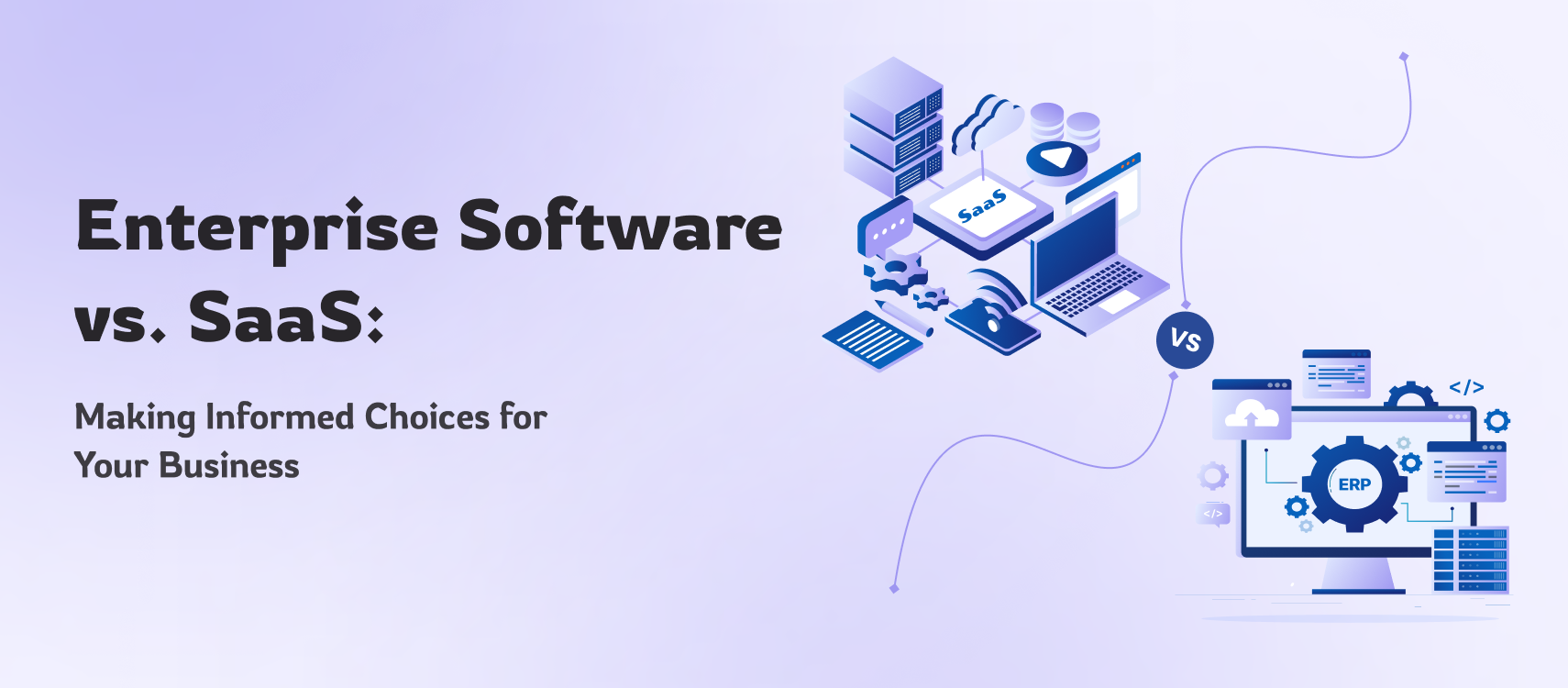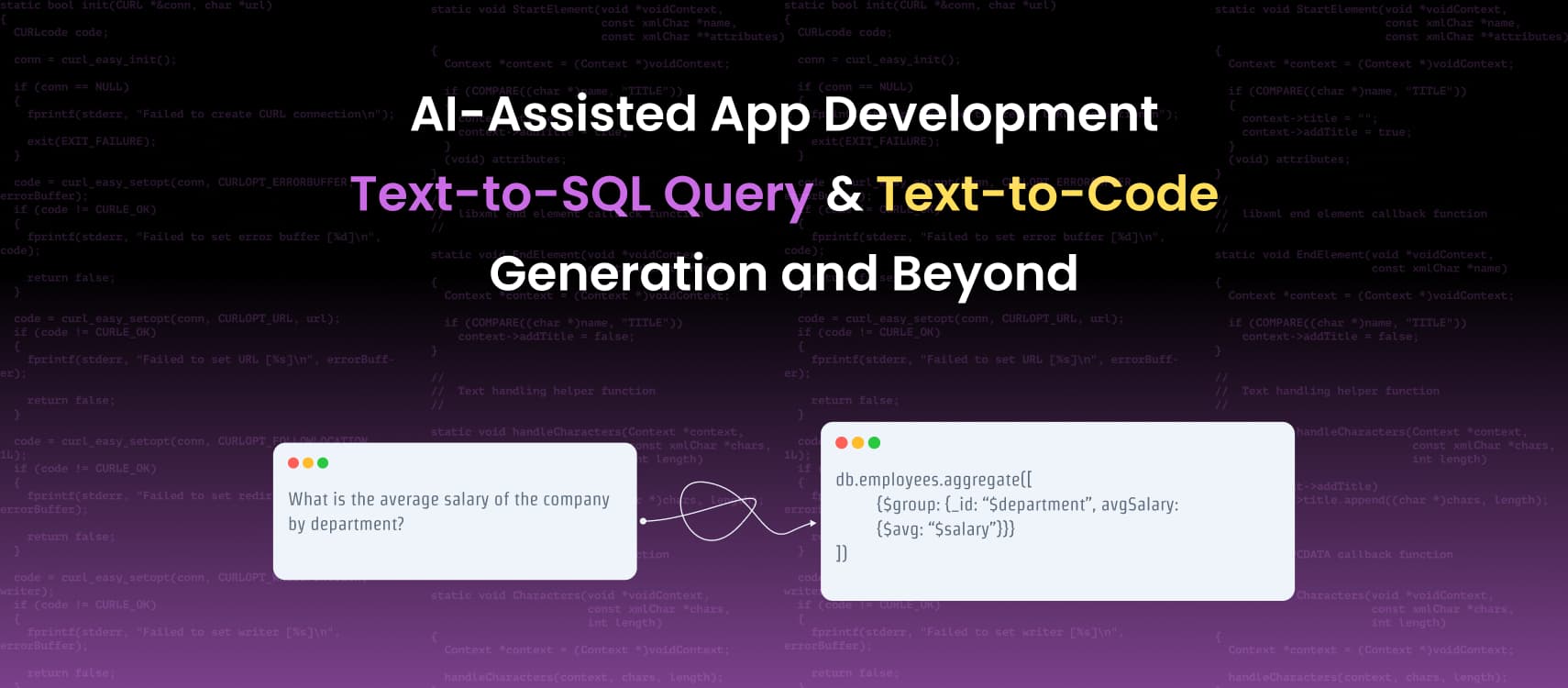Table of Contents
- Enterprise Software Development Pros
- Enterprise Software Development Cons
- Enterprise Software Development Use Cases
- Value Propositions
- Capabilities
- Technologies
- SaaS Pros
- SaaS Cons
- SaaS Use Cases
- SaaS Value Propositions
- SaaS Capabilities
- Technologies
- Summarising
In the fast-paced world of modern business, choosing the right software solution can be a critical decision that can impact your organization’s efficiency, scalability, and competitiveness. Two prominent options for this are enterprise software development and Software as a Service (SaaS). Both have distinct characteristics, advantages, and disadvantages.
Both enterprise software and SaaS services have their pros and cons, typical use cases, value propositions, standalone capabilities, audience, different monetization strategies, and underlying technologies. We will try to explore all of them.
Enterprise Software Development Pros
-
Customization and Control:
Enterprise application development is often preferred for the scope of high degree of customization. This means it can be tailored to meet the unique needs and processes of an organization. Businesses with specific requirements or complex workflows often prefer this level of control.
-
Data Security:
Many organizations, especially those in highly regulated industries like healthcare or finance, opt for enterprise software due to the perceived higher level of data security. By configuring on-premises solutions, an enterprise software development company can offer greater control over data storage and encryption.
-
One-time Licensing:
Traditional enterprise software typically operates on a one-time licensing model. While the upfront costs can be substantial, long-term ownership can be more cost-effective than SaaS subscription fees.
Enterprise Software Development Cons
-
High Initial Costs:
Custom enterprise software development can require a significant upfront investment. This includes purchasing licenses, hardware, and often, dedicated IT infrastructure to support the software.
-
Complex Implementation:
Customization can lead to complex implementation processes that require extensive planning, time, and resources. This can lead to delays in getting the software up and running.
-
Maintenance and Upgrades:
Keeping enterprise software up to date requires ongoing maintenance and potentially expensive upgrades. This can strain IT budgets and resources over time.
Enterprise Software Development Use Cases
Enterprise software development services are typically favored by large organizations or those with unique needs. Common use cases include:
-
Large-scale ERP Systems:
Enterprise Resource Planning (ERP) software helps manage core business processes such as finance, HR, inventory, and supply chain. These are often highly customized to fit an organization’s specific requirements.
-
Customized CRM Solutions:
Customer Relationship Management (CRM) software can be tailored to manage sales, marketing, and customer support processes to align with a company’s strategies.
-
Industry-specific Software:
Certain industries, like healthcare or manufacturing, may require specialized software to meet regulatory compliance and operational needs.
Value Propositions
-
Scalability:
Customization allows organizations to scale their software to meet evolving needs and accommodate growth.
-
Data Control:
Organizations that prioritize data control and security can benefit from on-premises solutions.
-
Competitive Advantage:
Tailored software can give businesses a competitive edge by streamlining processes and enhancing productivity.
Capabilities
Enterprise software can have a wide range of capabilities, depending on the specific solution. Some common features include:
-
Integration:
The ability to integrate with other systems and databases to facilitate data sharing and streamline processes.
-
Advanced Reporting:
Robust reporting and analytics tools to provide insights into business operations.
-
Workflow Automation:
The capacity to automate routine tasks and workflows, improving efficiency.
Technologies
Enterprise software is often built using a variety of technologies, including:
-
Database Management Systems (DBMS):
For data storage and retrieval.
-
Programming Languages:
Such as Java, C#, and Python for application development.
-
Middleware:
To facilitate communication between different software components.
-
Virtualization and Cloud Technologies:
For scalability and flexibility, even in on-premises solutions.
Software as a Service (SaaS) Pros
-
Low Upfront Costs:
SaaS development typically depends on a subscription model, which requires minimal upfront costs compared to enterprise software.
-
Ease of Deployment:
SaaS application development usually relies on cloud-based deployment, making them quicker and easier to deploy without the need for extensive IT infrastructure.
-
Automatic Updates:
SaaS providers handle maintenance and updates, ensuring that users always have access to the latest features and security patches.
Software as a Service (SaaS) Cons
-
Less Customization:
SaaS solutions are often less customizable than enterprise software, which may not suit businesses with highly specialized needs.
-
Data Privacy Concerns:
Some organizations may be hesitant to store sensitive data in the cloud due to data privacy and security concerns.
-
Ongoing Costs:
While SaaS can have lower upfront costs, the cumulative subscription fees over time may surpass the cost of a one-time enterprise software license.
Software as a Service (SaaS) Use Cases
SaaS app development is suitable for a broad range of businesses, especially those looking for cost-effective, easy-to-implement solutions. Common use cases include:
-
Collaboration Tools:
Cloud-based office suites and communication tools like Google Workspace and Microsoft 365.
-
Customer Support and CRM:
Customer support software and CRM systems like Salesforce or Zendesk.
-
Project Management:
Tools like Asana, Trello, and Monday.com for project planning and tracking.
Software as a Service (SaaS) Value Propositions
-
Accessibility:
Users can access the software from anywhere with an internet connection, promoting remote work and collaboration.
-
Scalability:
SaaS solutions can often scale seamlessly to accommodate business growth without extensive IT investments.
-
Simplified Maintenance:
The burden of software maintenance and updates falls on the provider, freeing up IT resources.
Software as a Service (SaaS) Capabilities
-
Multi-tenancy:
The ability to serve multiple customers from a single instance of the software while keeping their data isolated.
-
User Management:
Tools for managing user access and permissions.
-
Mobile Access:
Many SaaS applications are accessible via mobile devices for on-the-go productivity.
Technologies
SaaS applications are built using a range of technologies, including:
-
Cloud Infrastructure:
Such as Amazon Web Services (AWS), Microsoft Azure, or Google Cloud Platform to host the software.
-
Web Development Technologies:
Like HTML, CSS, and JavaScript for building the user interface.
-
APIs:
For integrating with other software and services.
-
Database Systems:
To store and manage data.
Summarising
There is no one-size-fits-all answer to choose between enterprise software and SaaS. The choice between these two options depends on an organization’s specific needs, budget constraints, and long-term goals.
Enterprise software offers customization and control, making it suitable for large enterprises with specialized requirements. On the other hand, SaaS offers accessibility, scalability, and reduced upfront costs, making it a preferred choice for many startups and small to medium-sized businesses.










